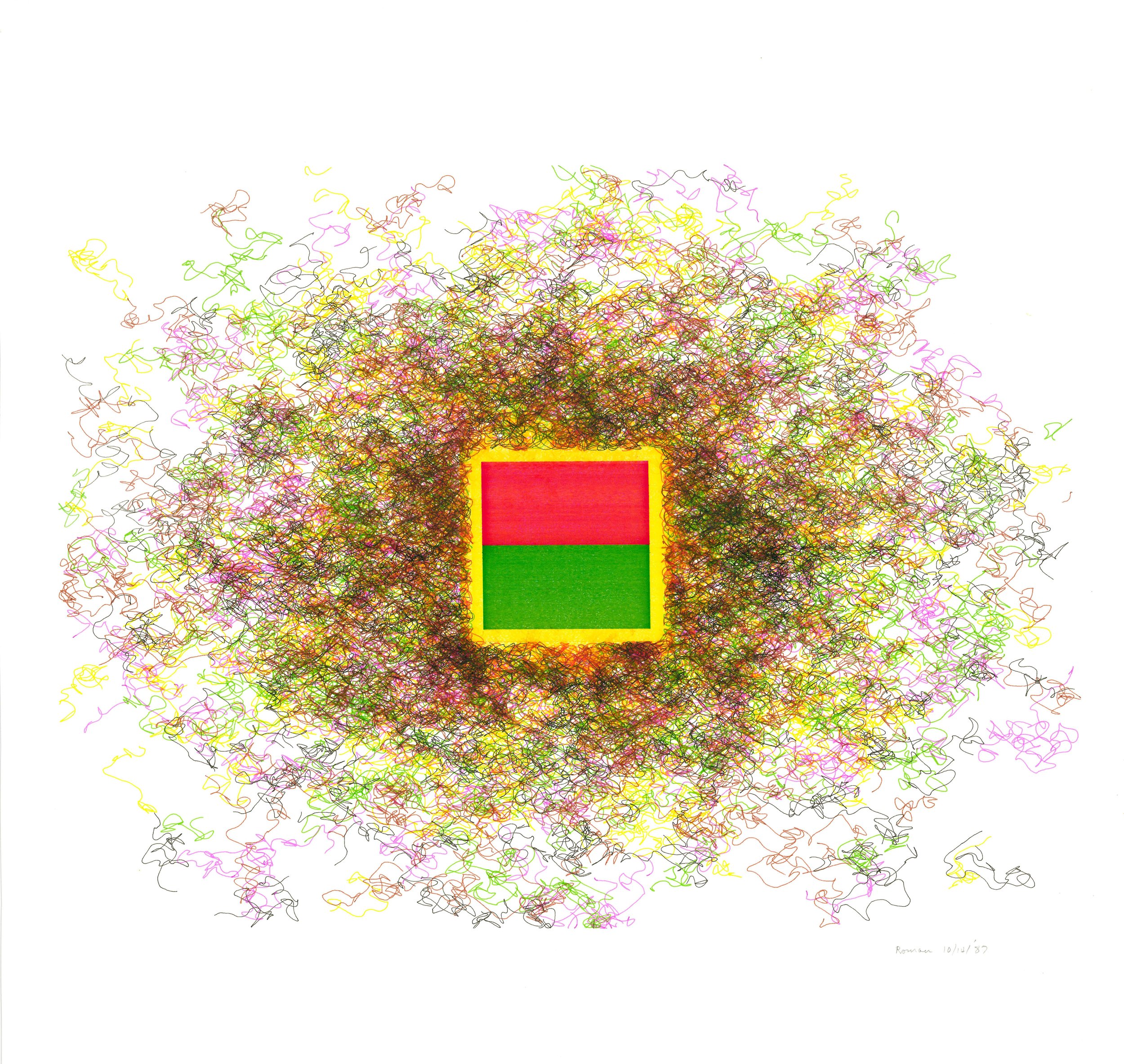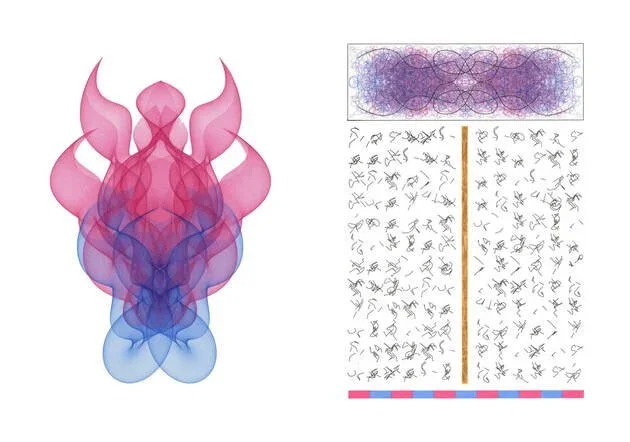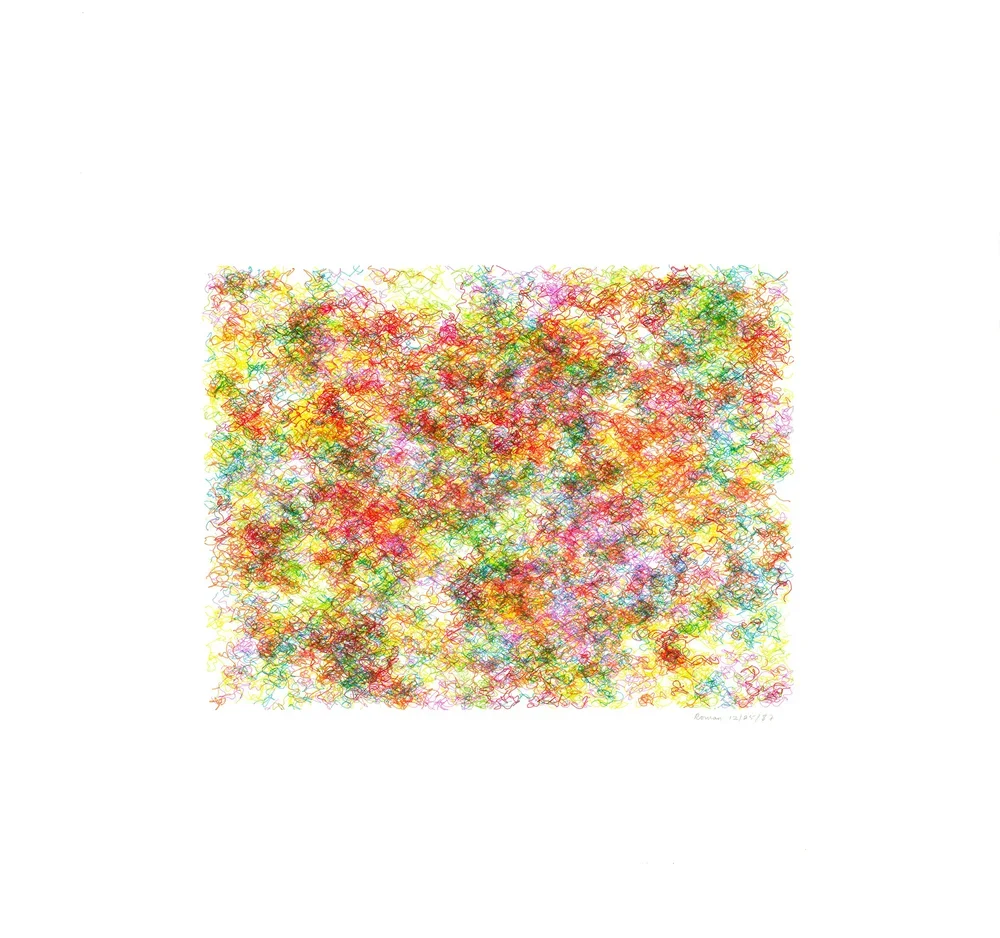
ROMAN VEROSTKO
Roman Verostko was born in 1929 in Tarrs, Pennsylvania, and studied art at the Art Institute of Pittsburgh. Alongside his artistic practice, he studied philosophy, theology, and history, which sparked his interest in spirituality. He became an ordained priest in 1959 at Saint Vincent Archabbey in Pennsylvania, but he didn’t give up pursuing his passion for art. He traveled to New York and Paris to continue studying art history. In 1968, he left his religious life and started experimenting with computers. In 1970, he enrolled in several courses about computer art at Control Data Institute in Minneapolis and MIT’s Center. He was immediately captivated by the possibilities of algorithms executed with computers.
In 1982, Verostko created an interactive program that executed his art-form ideas. “The Hand of Chance” was written in BASIC language with a first-generation IBM PC. Later, Verostko became interested in the printed version of his “Magic Hand of Chance” works. By the end of the 1980s, he had developed a program that controlled the drawing arm of a machine known as a pen plotter, creating intricate and complex drawings that were unlike anything else at the time. This experimental process made a huge impact on his artistic practice for decades. Using this drawing arm, Verostko created visual forms by varying his instructions and drawing each line precisely on rag paper. Sometimes, he also added brushes to the machine to execute paint strokes. He named his software Hodos, which means "path" in Greek and refers to a process of how the strokes follow whatever path the chaotic system makes. He used this tool to create several series, including the "Hodos Correspondence", "Diamond Lake Apocalypse", "Badland Scrolls", and "Ezekiel". These works showcase glyphic texts that try to mimic the visual qualities of language without being one. Later, in the 1990s, he developed a code for generating characters assigned to an alphabet. Many texts were then featured in his series, such as "Flowers of Learning", "Rocktown Scrolls", and "Pearl Park Scriptures."
Verostko has produced a lot of work over the past seventy years, exploring pure abstraction, electronic media, and systems of logic and language. His works can be found in many public and private collections, such as the Block Museum at Northwestern University in Evanston, IL; Spalding University in Louisville, KY; Tama Art University Museum, Tokyo, Japan; Minneapolis Institute of Art; Victoria and Albert Museum in London; Walker Art Center in Minneapolis; and the ZKM: Center for Art and Media in Karlsruhe, Germany.
In 2020, Saint Vincent College opened the Verostko Center for the Arts.
Analog
Articles

Exhibitions









